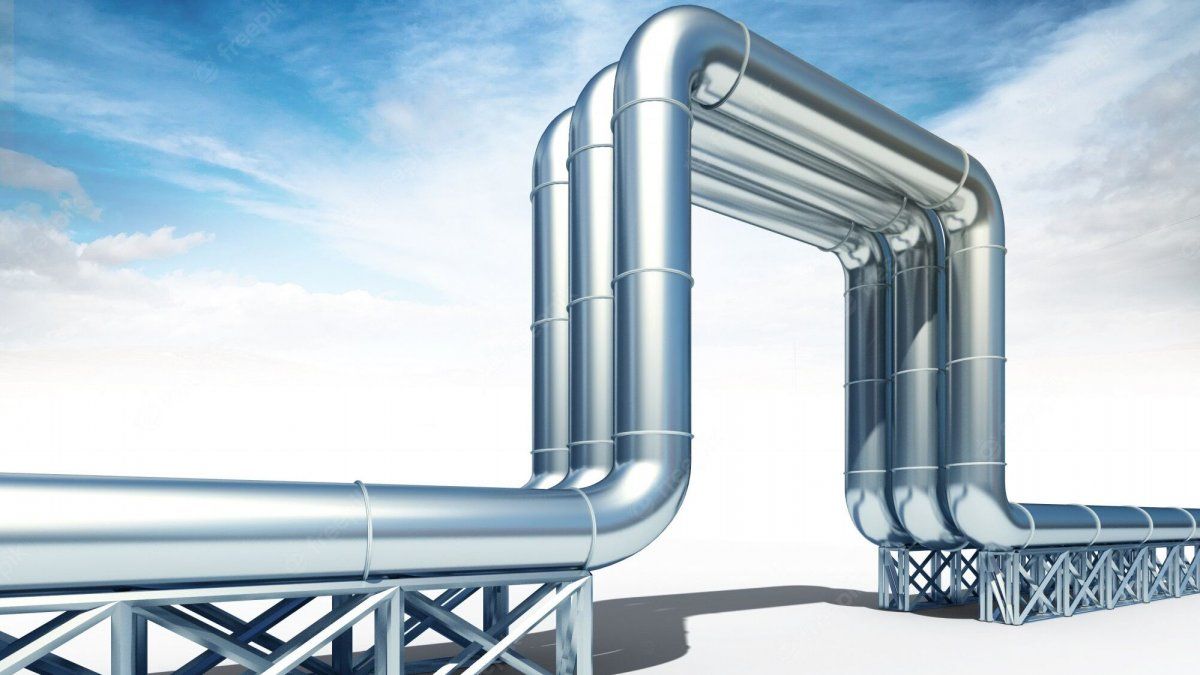Hydrocarbons, as is known, cut across all economic activity and are therefore strategic for the development of any nation. Argentina, a country in which its primary energy matrix is composed of more than 50% natural gas, has as its most relevant measure the development and transportation of this.
But How is a high pressure gas pipeline designed?
Any project that is intended to transport fluids over long distances – such as gas, water, oil or different products of these – through pipelines, must meet certain requirements imposed in the design, and these are,
- The supply flow that is needed (that is, the quantity),
- The necessary pressure at the head of the line to be built (in this case at the beginning of the gas pipeline),
- The minimum pressure needed on arrival, that is, at the point of consumption of the fluid
- The geography that the pipeline to be built will cross, that is, if the pipeline must cross, for example, mountains, lakes, etc.
In addition to this, it is possible that you must meet other requirements of the one that requested the project (for example, temperature of the fluid, chemical composition, etc.). Considering all this, the engineer, by means of calculations and programs, ensures compliance suitable for the transport of the fluid, in all these parameters, mainly in flow and pressure. An important point to bear in mind is that these calculations must be made so that the pressure at which the fluid reaches consumption is the one necessary for its use, as in the case of household gas, burners, heating, etc. And in industrial uses with sufficient pressure and flow for use in different equipment.
Natural gas is widely used in Argentina, starting with the first gas pipeline built in the country, which was inaugurated in 1949. That year, Ing. Julius V. Canessa achieved its goal, the completion of the San Martin gas pipeline, nearly 1,000 kilometers long -the longest in the world at that time-, bringing the gas that was previously vented (was lost) from Comodoro Rivadavia to Buenos Aires, increasing the distribution of 300 thousand cubic meters per day to 15 million.
To solve the transport of fluids over long distances (in general, from where the reservoir is to consumption), the solution is found in the mechanical sciences, derived from Fluid Mechanics, Thermodynamics and Strength of Materials. Corrosion and erosion are also taken into account, if the pipe is expected to work for many years, if this occurs, an oversizing of the thickness of the pipe is considered to alleviate this issue.
A gas pipeline is basically a succession of tubes of standard lengths (according to regulations of 6, 12 and 18 meters) joined together by different methods, generally due to the size of the gas pipelines they are welded. The construction stages of a gas pipeline can be summarized in the following in a general way: mobilization of equipment to the site, layout of the route, opening of the work track, trenching, parade of pipes (that is, placing them on the edge of the open trench), bending of pipes (if necessary), union and coating of the same, lowering to the trench, joints, filling of the trench and finally restitution of the track.
The general regulation in the pías, for the transport of and distribution of gases is the so-called NAG-100, determined by the regulatory entity ENARGAS.
In summary, the design of a high-pressure gas pipeline requires a detailed study to be able to build it, the thicknesses are determined by the design engineering, and must be in accordance with current regulations, its calculation is complex and different methodologies are used in accordance with the difficulties encountered.
Source: Ambito




